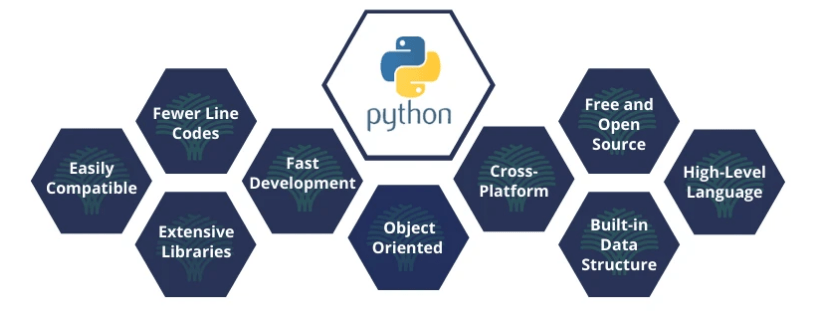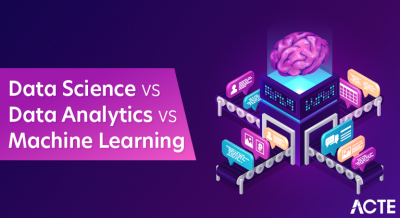
- Introduction to Python
- Why Python is So Popular
- Advantages of Python Programming
- Disadvantages of Python Programming
- Python vs Other Languages
- Use Cases: Where Python Excels
- Is Python Right for You?
- Conclusion
Introduction to Python
Python is a high-level, interpreted programming language known for its simplicity, readability, and versatility. Originally developed by Guido van Rossum and released in 1991, Python has grown to become one of the most popular programming languages in the world. Its clean and easy-to-understand syntax makes it an excellent choice for beginners, while its powerful features and extensive libraries make it equally valuable for experienced developers. Python supports multiple programming paradigms, including procedural, object-oriented, and functional programming, giving users the flexibility to approach problems in different ways. It is widely used in various domains such as web development, Data Science Training, data science, artificial intelligence, machine learning, automation, scientific computing, and software development. One of Python’s major strengths lies in its rich ecosystem of libraries and frameworks. Tools like Pandas, NumPy, Matplotlib, TensorFlow, and Django extend Python’s capabilities, making it suitable for everything from data analysis to building web applications and AI models. Additionally, Python has strong community support, with a vast array of tutorials, forums, and documentation available for learners at all levels. Whether you’re analyzing data, building applications, or automating tasks, Python provides the tools and flexibility needed to work efficiently. Its combination of simplicity and power continues to drive its widespread adoption in both industry and academia.
Do You Want to Learn More About Data Science? Get Info From Our Data Science Course Training Today!
Why Python is So Popular
Python has become one of the most popular programming languages in the world due to its simplicity, versatility, and powerful capabilities. One of the main reasons for its popularity is its clean and readable syntax, which makes it easy for beginners to learn and for professionals to write efficient, maintainable code. This simplicity reduces the learning curve and allows developers to focus on solving problems rather than worrying about complex language rules, as seen in A Day in the Life of a Data Scientist. Python’s versatility is another key factor behind its widespread use. It supports multiple programming paradigms, including procedural, object-oriented, and functional programming, making it suitable for a wide range of applications. From web development and automation to data science, artificial intelligence, and machine learning, Python can be used across various industries and domains.

The language also boasts a vast ecosystem of libraries and frameworks, such as NumPy, Pandas, TensorFlow, Flask, and Django, which accelerate development and expand its capabilities. In addition, Python has strong community support, offering abundant resources like tutorials, forums, and documentation, which help users at all levels. Its platform independence and integration with other technologies further enhance its appeal. Overall, Python’s balance of simplicity, power, and community support makes it a top choice for developers, data scientists, and researchers worldwide.
Advantages of Python Programming
- Easy to Learn and Use: Python has a simple, readable syntax that makes it accessible for beginners and efficient for experienced developers. Its straightforward structure allows users to focus on solving problems rather than learning complex syntax.
- Extensive Library Support: Python offers a vast collection of libraries and frameworks such as NumPy, Pandas, TensorFlow, Flask, and Django, which simplify tasks ranging from data analysis to web development and AI.
- Versatile and Multi-Purpose: Python is a general-purpose language used in many fields including data science, machine learning, web development, automation, scientific computing, and more.
- Large and Active Community: Python has a massive global community that continuously contributes to its growth. Abundant tutorials, forums, and documentation make it easy to get help and stay updated, making it one of the Top Data Science Programming Languages.
- Cross-Platform Compatibility: Python is platform-independent, meaning code can run on various operating systems with minimal changes, increasing development efficiency.
- Integration Capabilities: Python can easily integrate with other languages like C, C++, and Java, as well as technologies like databases and web services.
- Rapid Development and Prototyping: Python’s simplicity and wide array of tools enable fast development cycles, ideal for startups and research where speed and flexibility are critical.
- Slower Execution Speed: Python is an interpreted language, which generally makes it slower than compiled languages like C or C++. This can be a drawback for performance-critical applications.
- High Memory Consumption: Python’s dynamic typing and flexibility come at the cost of higher memory usage, making it less suitable for memory-constrained environments like mobile or embedded systems.
- Not Ideal for Mobile Development: Python lacks strong support and performance for mobile app development compared to languages like Swift or Kotlin, limiting its use in building mobile applications despite its strengths in Data Science Training.
- Weak in Browser and Front-End Development: Python is not used for client-side web development. Unlike JavaScript, it cannot run in web browsers, reducing its usability in front-end applications.
- Global Interpreter Lock (GIL): Python’s GIL allows only one thread to execute at a time, which limits the performance of multi-threaded CPU-bound programs.
- Runtime Errors: Python’s dynamic typing can lead to more runtime errors, which may not be caught until the program is executed, affecting reliability in large applications.
- Limited Support for Enterprise-Level Applications: Some large-scale, enterprise-level applications may prefer statically typed languages like Java or C# for better performance and maintainability.
- Cybersecurity and Networking: Python is employed in network scanning, penetration testing, and security automation due to tools like Nmap, Scapy, and Paramiko.
- Data Science and Analytics: Python is a top choice for data scientists due to libraries like Pandas, NumPy, and Matplotlib. It simplifies data cleaning, analysis, and visualization.
- Machine Learning and AI: With frameworks such as TensorFlow, Keras, Scikit-learn, and PyTorch, Python is widely used to build and train machine learning and deep learning models, bridging the gap between Big Data vs Data Science.
- Web Development: Python supports rapid web development through frameworks like Django and Flask, allowing developers to build secure, scalable, and maintainable web applications efficiently.
- Automation and Scripting: Python is ideal for automating repetitive tasks like file handling, data entry, and system monitoring, helping businesses save time and reduce human error.
- Scientific Computing: In fields like physics, biology, and engineering, Python (with libraries like SciPy and SymPy) is used for simulations, mathematical modeling, and complex calculations.
- Education and Prototyping: Its beginner-friendly syntax makes Python perfect for teaching programming and quickly prototyping ideas in startups or research environments.
Would You Like to Know More About Data Science? Sign Up For Our Data Science Course Training Now!
Disadvantages of Python Programming

Python vs Other Languages
Python stands out among programming languages due to its simplicity, readability, and broad range of applications, but it’s important to compare it with other popular languages to understand its unique advantages. Unlike Java or C++, Python has a more concise and user-friendly syntax, allowing developers to write fewer lines of code to accomplish the same task. This makes Python ideal for rapid development and prototyping, especially in startups and research environments. Compared to R, which is highly specialized for statistical analysis and data visualization, Python offers a more general-purpose approach with diverse Python Career Opportunities. While R excels in deep statistical modeling, Python is often preferred for its versatility and integration capabilities, making it more suitable for full-scale applications involving machine learning, web development, and automation. In contrast to JavaScript, which dominates web development, Python is better suited for backend development and server-side scripting, although it can be used in combination with frameworks like Django and Flask to build robust web applications. Python also shines in data science and AI, thanks to its powerful libraries like Pandas, NumPy, TensorFlow, and Scikit-learn. While each language has its strengths, Python’s balance of readability, flexibility, and a strong ecosystem makes it a leading choice across diverse fields in technology and data analysis.
Are You Considering Pursuing a Master’s Degree in Data Science? Enroll in the Data Science Masters Course Today!
Use Cases: Where Python Excels
Is Python Right for You?
Deciding whether Python is the right programming language for you depends on your goals, background, and the type of projects you aim to work on. Python is an excellent choice for beginners due to its clear and readable syntax, which allows new programmers to focus on learning programming concepts without getting overwhelmed by complex language rules. If you’re just starting out or transitioning into tech from another field, Python offers a gentle learning curve and a vast support community. For those interested in data science, artificial intelligence, machine learning, or automation, Python is one of the best languages to learn for understanding concepts like Machine Learning Vs Deep Learning. It has a rich ecosystem of libraries and frameworks such as Pandas, NumPy, TensorFlow, and Scikit-learn that make complex tasks more accessible and efficient. Python is also widely used in web development (with Django and Flask), scripting, and even game development. However, if you are targeting areas like mobile app development or need high-performance computing (e.g., in embedded systems or game engines), other languages like Kotlin, Swift, or C++ might be more suitable. Overall, if your focus is on flexibility, rapid development, and access to a broad range of tools and resources, Python is a smart and future-proof choice that fits well in today’s tech landscape.
Want to Learn About Data Science? Explore Our Data Science Interview Questions & Answer Featuring the Most Frequently Asked Questions in Job Interviews.
Conclusion
In conclusion, Python has established itself as one of the most versatile and widely-used programming languages in the modern tech world. Its simplicity, readability, and vast ecosystem make it an ideal choice for both beginners and experienced developers. Whether you’re interested in data science, artificial intelligence, web development, automation, or general software development, Python offers powerful tools and libraries that support a wide range of applications. Its community-driven development ensures constant improvement and access to abundant learning resources, including Data Science Training, which makes mastering Python more achievable than ever. Python’s adaptability allows it to integrate smoothly with other technologies and programming languages, enhancing its utility across various platforms and domains. From powering complex machine learning models to simplifying data analysis and visualization, Python plays a key role in driving innovation and efficiency in today’s data-driven world. As industries continue to rely more on automation, big data, and intelligent systems, the demand for Python skills will only grow. For students, professionals, or anyone exploring a career in technology, learning Python is not only a practical investment but also a gateway to numerous career opportunities. Embracing Python opens the door to building real-world solutions and contributing to the future of technology in meaningful ways.




